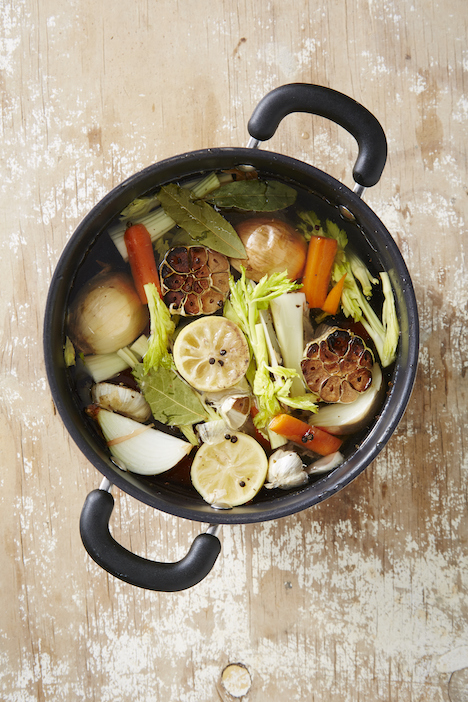I’m a huge fan of leftovers. My book I Quit Sugar: Simplicious is all about them – using them, eating them, creating a kitchen flow around them.

Hugh Fearnley-Whittingstall – bless him – is on the same page. But in a different book. You might have come across River Cottage – Love Your Leftovers which was published shortly after Simplicious. It’s a ripper of a tome. Hugh goes to town on leftovers. Bless him.
I’ve been pouring over the book since it landed on my desk last week. Here are six top things I learned from him:
1. Cool cooked food destined for leftovers asap. If practical, rinse in cold water (cooked veg) or stand the saucepan in a sink of cold water (stew, soup or sauce). You’ll preserve the flavour and colour better and it’s a good food hygiene habit, too.
2. Add the veggies late when making soups or stews and stop simmering when your vegetables are still slightly underdone. This will help to avoid mushiness later on when you reheat your leftovers.
3. Get the fish in the fridge ASAP. Fish deteriorates quickly at room temperature so pop it in the fridge as soon as you can after buying to avoid it going off.
4. Cool cooked rice rapidly to prevent food poisoning. As rice cools, especially at room temperature, the spores of harmful bacteria can germinate producing a toxin that causes food poisoning. Once this toxin is present, it’s there to stay no matter how hot you reheat the rice to, so it’s best to avoid it in the first place – don’t you reckon? Cool leftover rice as rapidly as you can by either rinsing it under cold water and draining it well or by spreading it out on a plate to cool rapidly. Make sure you place it into the fridge within an hour of cooking and use it up within a day or two.
5. The white stuff on your chocolate if safe to eat. Does the chocolate (85-90% of course) at the back of your pantry have a white powdery substance on it’s surface? This white film is called chocolate bloom and develops when cocoa fats are exposed to air. Don’t fret, it’s still safe to eat and you can keep cooking with it quite happily and deliciously.
6. Don’t multiply the seasonings. When doubling, tripling or even quadrupling the quantities of a recipe, you might not need to add seasoning in the same multiples as the rest of the ingredients (especially with flavours like chopped fresh chilies). So go easy at first and taste, taste taste!
Do any helpful tips you’d like to add below? Any other leftover hacks to add to the list?

